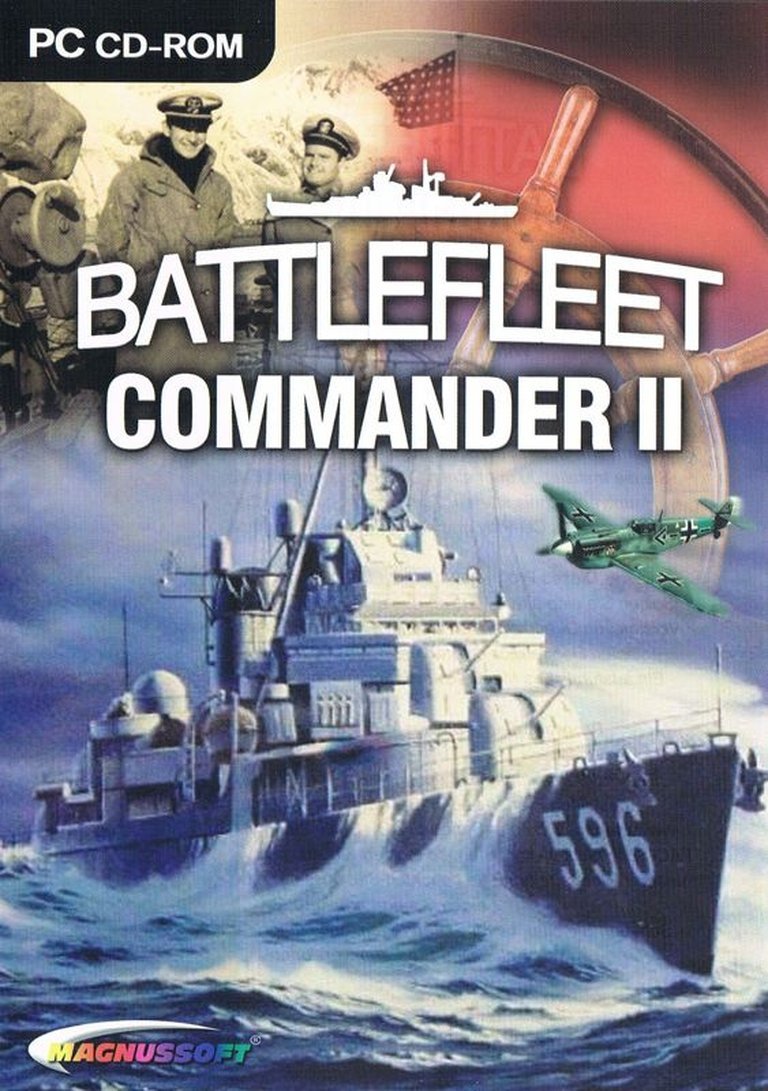- Release Year: 2004
- Platforms: Windows
- Publisher: magnussoft Deutschland GmbH
- Developer: Laubenheimer Productions
- Genre: Strategy, Tactics
- Perspective: 3rd-person
- Game Mode: LAN, Online PVP, Single-player
- Gameplay: Turn-based combat
- Setting: World War II

Description
Battlefleet Commander II is a World War II-themed naval strategy game where players command fleets from the German, Japanese, Royal, or US Navy. Players take turns targeting coordinates to sink enemy ships, with the goal of destroying the entire opposing fleet. The game features single-player campaigns and multiplayer options via LAN or internet, offering both strategic depth and competitive gameplay.
Battlefleet Commander II Guides & Walkthroughs
Battlefleet Commander II: Review
Introduction
In the vast ocean of naval strategy games, Battlefleet Commander II (2004) stands as a worthy successor to the classic Battleship gameplay formula. Combining the turn-based suspense of hitting and sinking ships with the strategic depth of WWII-era fleet management, this game offers both casual players and hardcore strategy enthusiasts a compelling experience.
While it may not have the visual grandeur of modern titles, its focus on gameplay mechanics and multiplayer engagement ensured it carved out a niche for itself in the early 2000s strategy game landscape. This review delves into the game’s origins, mechanics, and lasting impact to determine its rightful place in video game history.
Development History & Context
Developed by Laubenheimer Productions and published by magnussoft Deutschland GmbH, Battlefleet Commander II was released in 2004. At the time, the strategy game market was vibrant, with titles like Age of Empires and Civilization setting the bar high. However, Laubenheimer Productions chose a different path, focusing on a Battleship variant that emphasized multiplayer and historical accuracy.
The technological constraints of the era meant the game relied on 2D graphics and a fixed/flip-screen perspective. However, this simplicity allowed developers to concentrate on refining the gameplay mechanics rather than pushing graphical boundaries. The decision to include three single-player campaigns and robust multiplayer options speaks to the studio’s commitment to replayability and player engagement.
Narrative & Thematic Deep Dive
Battlefleet Commander II doesn’t boast an expansive narrative; instead, it grounds itself in the historical context of World War II naval warfare. Players can command fleets from Germany, Japan, the Royal Navy, or the US Navy, each with distinct ship types and characteristics. The campaigns likely mirror key engagements from the Pacific and Atlantic theaters, providing a backdrop that’s both familiar and engaging without requiring an extensive plot.
While the game’s story may be minimal, the thematic elements ofoutsmarting opponents, managing fleet resources, and adapting strategies under the pressure of limited information captivate players. The WWII setting evokes a sense of historical gravitas, making each battle feel like a chapter in a larger conflict.
Gameplay Mechanics & Systems
At its core, Battlefleet Commander II follows the classic Battleship ruleset: players place their fleets on a grid and take turns firing at coordinates. Hitting a ship grants another turn, while misses cede control to the opponent. The first to sink all enemy ships wins.
Innovations include:
1. Campaign Mode: Three single-player campaigns offer structured progression beyond the basic skirmish mode.
2. Fleet Customization: Different navies provide varying ship compositions, requiring adaptability.
3. Multiplayer Options: LAN and internet support allow for competitive play against other human opponents.
4. Campaign Management: Features like visual range detection and reconnaissance planes add layers to strategic decision-making.
The UI effectively displays’Reveal’ and ‘Reconnaissance plane’ options, adding depth to information gathering while maintaining simplicity. The game’s pacing is deliberate, encouraging methodical planning rather than rapid reactions.
World-Building, Art & Sound
Set against the backdrop of WWII, the world-building is authentic yet abstracted. Visuals adopt a fixed/flip-screen style with 2D sprites or basic 3D models, depending on the system. The art direction captures the essence of WWII naval vessels without getting bogged down in excessive detail.
Sound design incorporates sonar pings, torpedo detonations, and gunfire to immerse players in the high-stakes environment. While not orchestral, the audio cues enhance the tension and excitement of each engagement.
Reception & Legacy
Upon release, Battlefleet Commander II received positive feedback from players who appreciate its Replayability (4/5 on MyAbandonware) and historical accuracy. Critical reviews are scarce, but user ratings suggest it’s a solid entry in the Battleship genre.
Its legacy is limited but enduring. While it didn’t revolutionize the strategy genre, it successfully modernized the Battleship experience with multiplayer connectivity and campaign structure. Fans of classic naval strategy games continue to seek it out, ensuring its place in the pantheon of niche gaming gems.
Conclusion
In conclusion, Battlefleet Commander II is a well-crafted Battleship variant that excels in offering strategic depth, historical context, and multiplayer longevity. While it may not be a household name, it stands as a testament to the enduring appeal of turn-based naval warfare games. Its influence may be subtle, but its contribution to the genre is undeniable. For those seeking a classic strategy experience with a modern twist, this game remains a hidden treasure in the annals of gaming history.